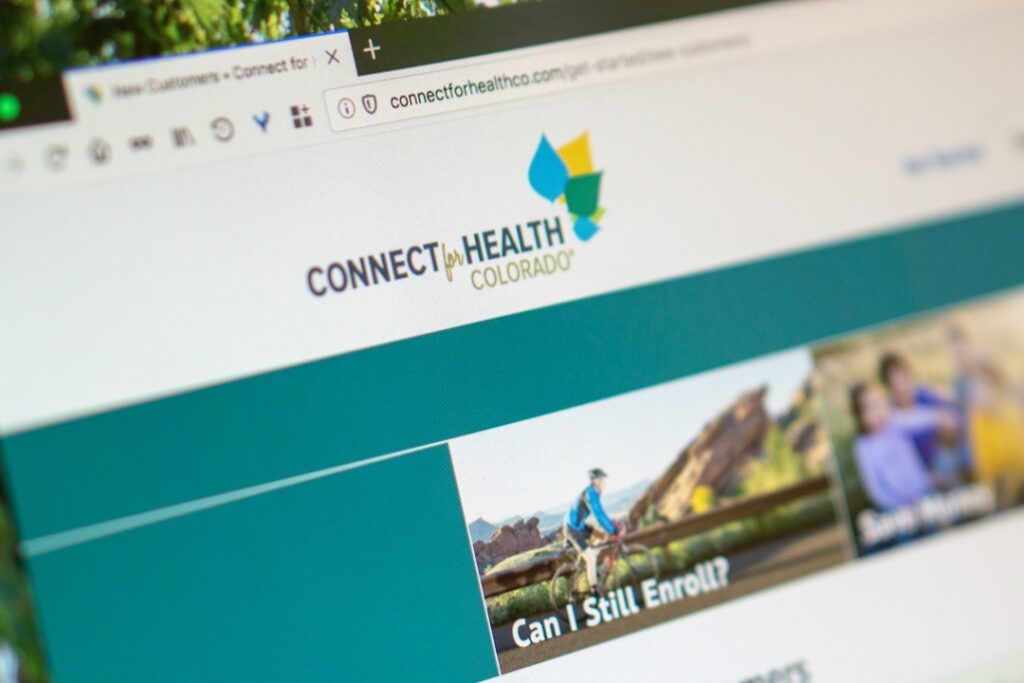Colorado moves one step closer to a government-designed health insurance plan

Federal authorities Thursday gave the go-ahead to one of the most ambitious pieces of Gov. Jared Polis’ agenda: A government-designed health insurance plan mandated to be sold at lower prices.
Rates and final details for the Colorado Option are set to be officially unveiled later this summer. But a critical part of its launch involved winning an approval from the federal government known as a 1332 waiver.
The waiver gives the state leeway under the Affordable Care Act to take innovative approaches to providing health insurance that might otherwise violate technical parts of the law. It will also bring in extra federal dollars to the state to help implement the program.
“Through this new model, Colorado leverages federal savings to expand affordability and coverage in the state like no other state has done before,” Chiquita Brooks-LaSure, the administrator of the federal Centers for Medicare and Medicaid Services, which approved Colorado’s waiver application, said in a statement. “The Colorado Option is groundbreaking and a step in the right direction to reduce the uninsured rate, while investing in health insurance coverage affordability and improvements, and advancing health equity.”
Details of the Colorado Option
Lawmakers passed the legislation creating the Colorado Option in 2021. It instructs state regulators to write up a “standardized plan” — meaning a consistent package of benefits and cost structures like co-pays — that insurance companies will be required to sell across the state. The companies must also price premiums for the Colorado Option plans 5% below what they charged for plans in 2021, after adjusting for inflation. That reduction target increases to 15% below by 2025.
Colorado Option plans will only be sold in the individual and small group markets, meaning the places where small businesses and people who are buying insurance on their own shop.
Because the Colorado Option will, in theory, save the federal government on what it already spends to provide subsidies to help people pay their insurance premiums, it creates what are known as “pass-through” savings that can come back to the state. An actuarial analysis included in the state’s waiver application estimates the Colorado Option will save the federal government $13.3 million in 2023, rising to $147.9 million by 2027.
The state plans to use that money to provide additional subsidies to low-income Coloradans and those who are not eligible for federal subsidies, for instance due to immigration status.
Skepticism from insurers
Insurance carriers submitted their proposed rates — both for the Colorado Option plans and other plans — this month for approval by the Colorado Division of Insurance, said Amanda Massey, the executive director of the Colorado Association of Health Plans, a trade group. Massey said she did not know if all of the proposed Colorado Option rates met the price reduction target, and insurance companies haven’t said. (The proposed rates don’t become public until next month.)
But insurance companies for months have been raising concerns that they won’t be able to hit the targets while also keeping the rates actuarially sound. Massey said the Colorado Option plans are richer than a typical insurance plan — they have more stuff in them or more favorable cost structures. And she said there’s worry that the way the state will calculate inflation, using the Consumer Price Index’s medical index, won’t keep up with the skyrocketing inflation being seen on the ground.
“We think that the methodology is flawed,” she said Thursday. “So between that methodology and the additional benefits in the standardized plan, we’re really concerned about meeting the target reductions.”
“It’s really to be determined whether any of the promises made about this policy will come to fruition,” she added.
If insurers can’t meet the Colorado Option’s price-reduction targets, the state commissioner of insurance has the ability to order public hearings and to mandate lower hospital prices in order to drive down the cost of a plan. But Commissioner Michael Conway has said he doesn’t expect to use his price-setting authority in the first year.
Cheers from consumer advocates
Consumer advocates cheered news of the Colorado Option’s federal approval.
“This waiver is a vital component to Colorado’s efforts to expand health coverage and make it more affordable for all people living in Colorado,” Adam Fox, the deputy director of the Colorado Consumer Health Initiative, said in a statement.
In his own statement, Jake Williams, the executive director of Healthier Colorado, said: “At a time when Colorado families are paying unprecedented prices at the pump and the grocery store, we want them to know relief is on the way.”

The federal waiver approval also extended another of Polis’ signature health care initiatives — a reinsurance program that helps insurance companies pay their highest-cost claims, thus allowing them to reduce premium prices for everyone. The Polis administration estimates reinsurance reduces insurance prices for people in the individual market by 20% a year.
Polis has made his efforts to save Coloradans money into the centerpiece of his reelection campaign, and he capitalized on Thursday’s announcement to promote that work.
“I’m thrilled that Colorado’s waiver has been approved — allowing us to move forward with this historic money-saving and forward-thinking program in Colorado,” Polis said in a statement. “Saving people money on health care couldn’t come at a better moment.”

We believe vital information needs to be seen by the people impacted, whether it’s a public health crisis, investigative reporting or keeping lawmakers accountable. This reporting depends on support from readers like you.
This content was originally published here.




Responses